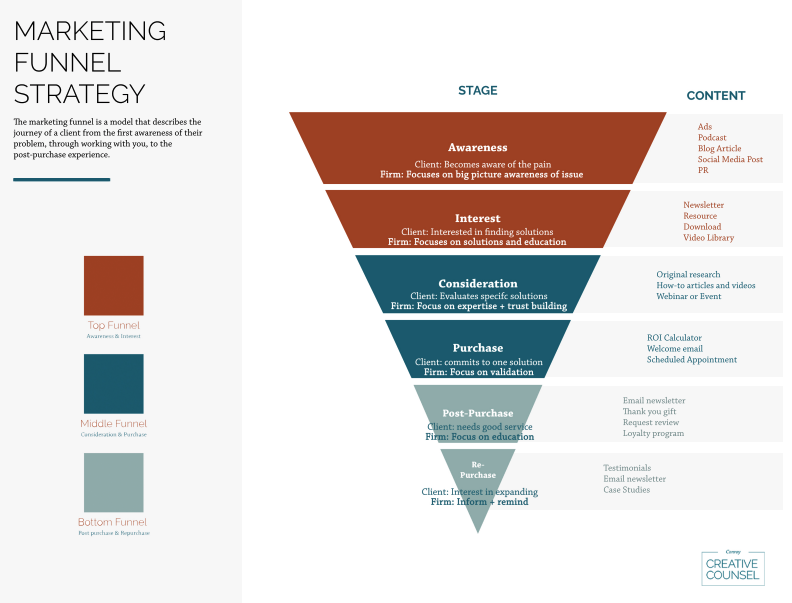A content audit provides your firm with an opportunity to review the written content on your website and see what needs to be revised or updated. This might include errors in the content, outdated information, broken links or anything else that affects the usability or quality of your website and its content.
After performing a solid content update, you will have clear vision regarding new SEO opportunities and how to improve the user experience on your site.
Here is a simple step-by-step process that will help you get started with the content audit process for your website.
- Determine your goals: Your first step should be to determine exactly what it is you hope to get out of a content audit for your website. Are you looking to generally improve the content across your website and deliver high-quality information and writing to your clients? Are you looking to drive better search engine results? Do you simply want to make sure you have a functional website that has up-to-date features? The goal you have will determine the other steps you take in conducting the audit.
- Develop a spreadsheet: Develop a spreadsheet where you will capture the information you need to track as part of your audit. There will be various headings in this spreadsheet with information to capture, including the URL, page type, page title, meta description, analytics information and anything else that might be helpful based on the goals you set for your audit.
- List your content: Develop a list of all the content on your site you wish to analyze, including web pages, landing pages and blog posts. If you have a small website without many pages you can easily copy and paste this information manually into a spreadsheet, but if you have a lot of pages on your domain you may need to download a complete site map.
- Categorize the content: After listing out all of your content, it’s time to categorize it. Note the type of content (blog post, web page, etc.). For blogs, include the date on which you published or last updated it. If you have older posts, you can update them with new information, which will help your search rankings.
- Data analysis: Once you have all the data you need collected, you will begin the analysis stage. If your goal is to improve SEO, here’s where you look for missed opportunities with titles or meta descriptions. If you want to improve or update your content, you should pay attention to older content with outdated information. You should also analyze traffic to each page, and pay attention to the characteristics of the pages on your site that get the most traffic. Identify pages with low traffic where there are chances for improvement.
- Action: Based on the analysis you’ve performed, you should create some clear action steps for you to work on moving forward. Assign each item a priority and begin working through the list as your schedule allows.
Need assistance in performing a content audit for your law firm’s website? Contact us today at Conroy Creative Counsel for guidance.











